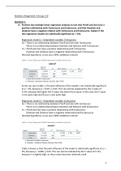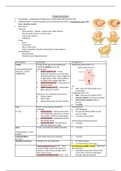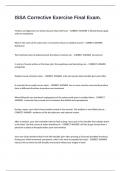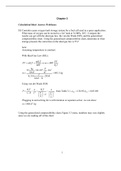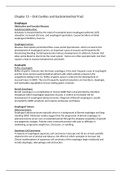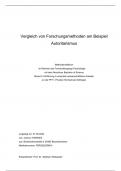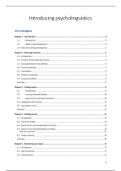Paper 1:
1) Particle Interactions:
135. Bubble chamber is a particle detector system in which the particles trigger bubbles to be created in a
superheated liquid typically hydrogen. Charge, Mass-Energy and Momentum are conserved.
Conservation of Charge – The charge of the created particles is equal to the charge of the initial particles.
Particles with opposite curvatures have opposite charges. As there is no track, then the particle must be
neutral.
Conservation of Momentum – The sum of the momentums of the created particles is equal to the
momentum of the initial particle. If a particle changes direction, it experiences a change in momentum.
There must be another particle created with a momentum which is equal and opposite to the change in
momentum. Particles with the same magnitude of charge and radius have the equal momentum as r =
mv/Bq.
Conservation of mass/energy – The total mass/before and after an interaction is constant. Radius of
curvature decreases as the particle transfers KE to other forms. Short track shows that the particle is short
lived. The increase in mass of the new particles come from the KE of the initial particles according E = mc 2
139. Relativistic effect is when a particle is accelerated reaching velocities close to light (above 90% of the
velocity of light), which results in time slowing down for the particle which is known as time dilation. This
means the particle’s lifetime increases which results in the speed of the particle to stop increasing and
instead the value of mass increases.
140. Baryons – Made from three quarks. Mesons – Made from a quark and an anti-quark.
Leptons – Fundamental particles.
141. Every particle has a corresponding anti particle which have opposite charges but the same mass. All
the properties of the anti-particle are opposite in sign.
142. A particle interaction is only possible if charge is conserved, baryon number is conserved, lepton
number is conserved and strangeness is conserved.
2) Resistivity and Circuit Principles:
40. Core Practical 2 – Determine the electrical resistivity of a material
Draw a circuit diagram and include apparatus metre rule and micro meter.
For different lengths of wire, record the corresponding current and voltage - Change length at least 6 times
For each length calculate the resistance using R = V/I.
Plot a graph of resistance against length and determine its gradient.
Measure the diameter of the wire and calculate the cross-sectional area using A=𝜋(d/2)2
Resistivity = Gradient x A
41. Individual electrons move with an average velocity known as their Drift Velocity, I=nAqv
42. As the length of wire increases, the total resistance increases, so the pd across the wire also increases
due to V = IR.
43. Potential dividers are used when the pd needs to be varied from 0 to V volts.
3) Conservation of momentum and circular motion
97. Ft = P
98. Core Practical 9 – Investigate the relationship between the force exerted on an object and its change of
momentum. (double check)
Set up apparatus with the pulley fixed to the edge of the desk and a string passing over it with one end
attached to a pulley and the other end to a hanging mass.
Masses and a card are placed inside the trolley.
, Measure the mass of the system, M, of masses both in the trolley and hanging off the string using a mass
balance and the mass within the trolley only, m.
Measure the length of the card, L, using a ruler.
Release the trolley such that the hanging masses will fall vertically pulling the trolley along the ramp.
L
The initial and final velocity, u and v, are calculated by v= , where t is the time recorded by the first light
t
gate (for u) and second light gate (for v).
Calculate change in momentum and use that to calculate force where t is the time taken for the card to
travel between the two light gates.
Repeat 3 times to calculate mean force.
p
Repeat procedure, moving the masses from the trolley to the hanger, recording and F (where F =mg, m
t
is the mass in the trolley)
p
Plot F against which should give a straight line for Ft = P
t
(Practical could also be done on an air track instead)
100. Core Practical 10 – Use ICT to analyse collisions between small spheres, e.g. ball bearings on a table
top.
Record the masses (m) of the two spheres using a top pan balance and then place them on a level table.
Position two metre rules perpendicular to each other using a set square.
Place a video camera above the table and start the camera recording.
Roll a square towards another stationary sphere so that they collide and roll.
Stop video when both balls come to rest. Import the video to a tracking software and calibrate the distance
and a 900 using a metre rule.
Go through each frame of video to calculate the distance travelled and calculate the time between each
frame.
Calculate the initial and final velocity of the sphere using Pythagoras theorem.
Angle of travel of the two speeds calculated using trigonometry.
Use velocities to find the initial and final momentum in both the horizontal and vertical plane and show if
momentum is conserved in the two collisions.
v2
105. Derive Equations for centripetal acceleration, a = =r𝛚2
r

